The HTC One M9 Review: Part 1
by Joshua Ho on March 22, 2015 7:00 PM EST- Posted in
- Smartphones
- HTC
- Qualcomm
- Mobile
- Snapdragon 810
- One M9
System Performance: Snapdragon 810
We've been able to test Snapdragon 810 before, but it was only in the context of Qualcomm’s developer platform tablets and phablets, which have a higher possible TDP than shipping devices, and generally doesn’t have any need for battery life as these devices usually spend all of their time plugged into a charger. Thus, the One M9 represents our first experience with a Snapdragon 810 device with shipping software and hardware. HTC noted during the review process that our devices were running non-final software, and we received an OTA update that significantly changed the thermal throttling characteristics of the device, but this seems to have only affected performance in situations where the SoC was nearing maximum acceptable skin temperatures as performance in these benchmarks were relatively unchanged.
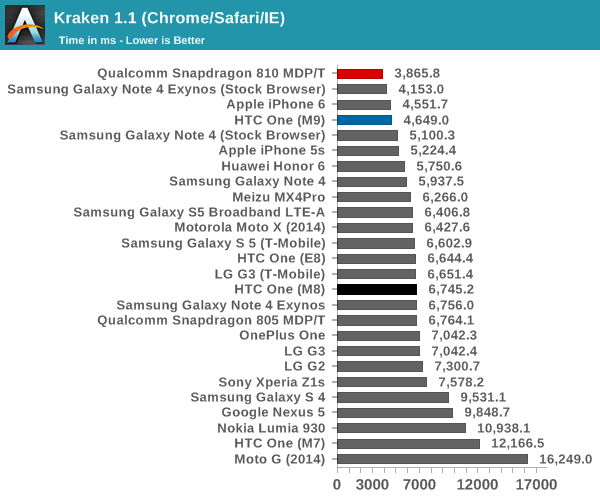
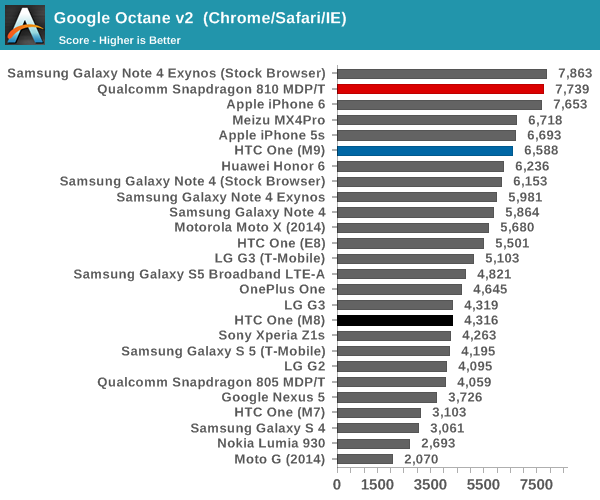

In our first few browser tests, we can see that the One M9 posts dramatically lower performance than the Snapdragon 810 MDP/T, which seems rather strange. However, using CPUBurn to try and load just a single thread reveals that without HTC’s CPU cheats, it’s basically impossible to get the A57 cluster beyond 1.5 to 1.6 GHz. It's important to emphasize that this isn't new behavior, as this was present on pre-release software as well, which means that HTC didn't do this at the last minute.
For those that are unfamiliar with how HTC's CPU cheats work, HTC continues to rely on some level of benchmark detection, and it seems that when a benchmark is detected it enables a "High Performance" mode in the developer settings with no option to disable this mode. It's possible to work around this mode by using benchmarks that evade such detection mechanisms (and we do), but it's also possible manually toggle this mode on and off if a benchmark isn't detected. This benchmark mode appears to relax throttling constraints, but more obviously it enables one to go from a maximum of 1.6 GHz to the rated 2.0 GHz of the Snapdragon 810 for extended periods of time. However, even in this mode we can see that a sustained load of a single thread on the A57 cluster will cause the cluster to throttle to 1.7 GHz in this mode, while without this mode enabled we see that a single thread will eventually cause the A57 cluster to clock around 1 to 1.2 GHz. If the normal governor does allow the SoC to reach 1.9 GHz, I can't really perceive the amount of time that it does reach such a speed.
The most concerning result is WebXPRT, which is a bursty workload that runs over a few minutes, which suggests that we’re already seeing thermal throttling in the M9.

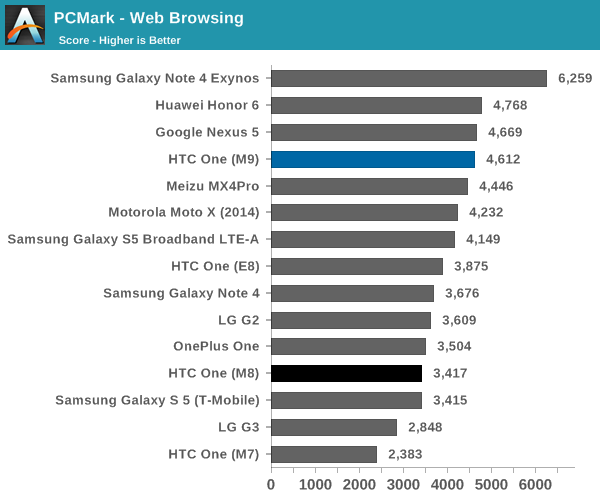
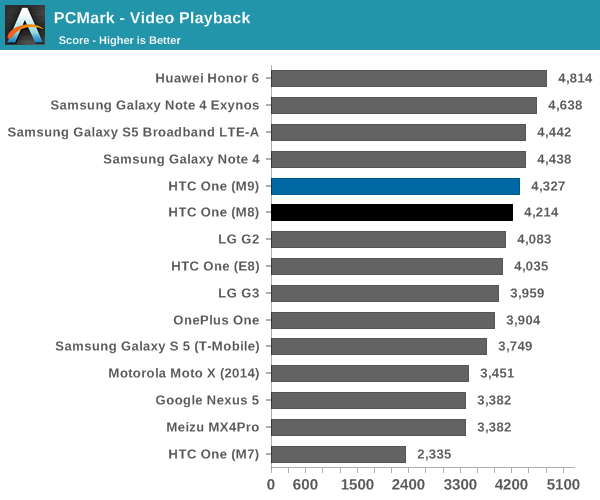
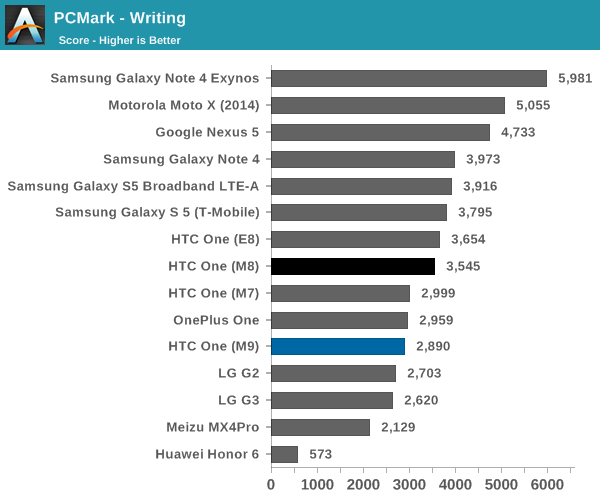
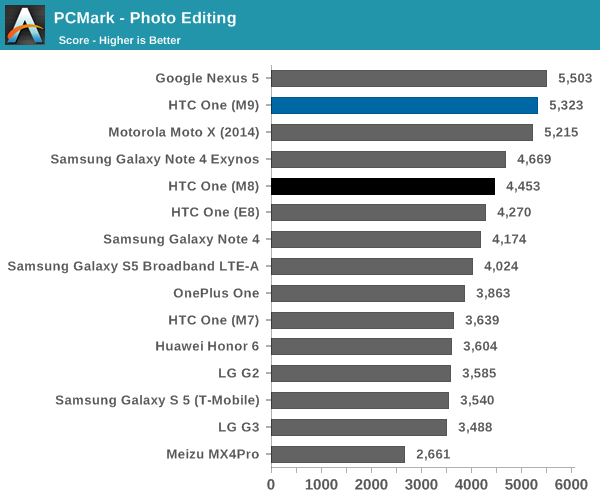
In PCMark, which is a benchmark that tends to focus strongly on race to sleep scenarios, we can see that the Snapdragon 810 appears to significantly trail behind the Exynos 5433, which is on a similar process node. It's hard to say whether this is due to the scheduler configuration or differences in the physical design of the SoC, but at any rate this is another concerning performance from the SoC of the One M9.
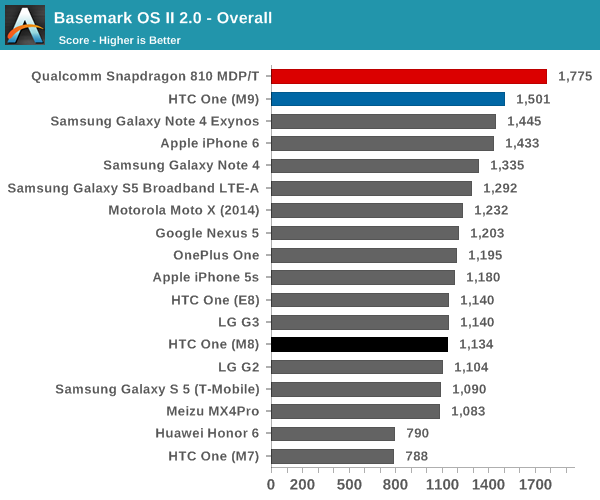

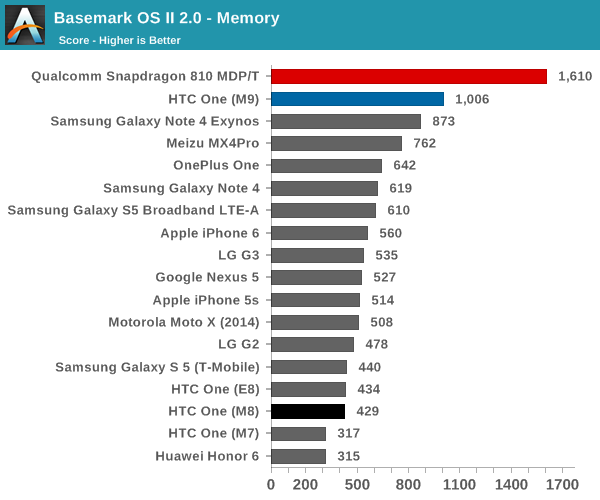
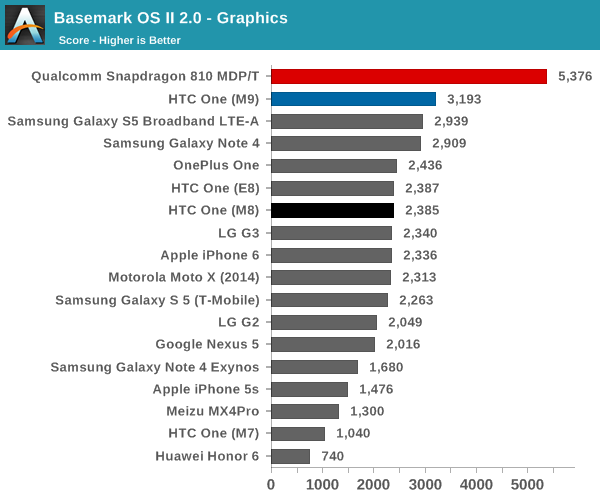
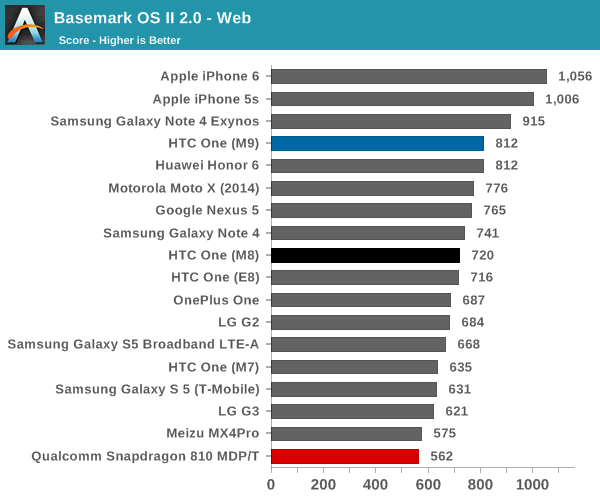
Moving on to the general system performance tests, we see that the M9 delivers a reasonable improvement in performance over the M8, but most of the difference seems to come from the GPU and storage performance rather than anything else that was tested. Overall, the Snapdragon 810 really isn’t off to the best start in any test we’ve thrown at it so far. To see if Snapdragon 810 has any redeeming features we’ll look at GPU performance next.


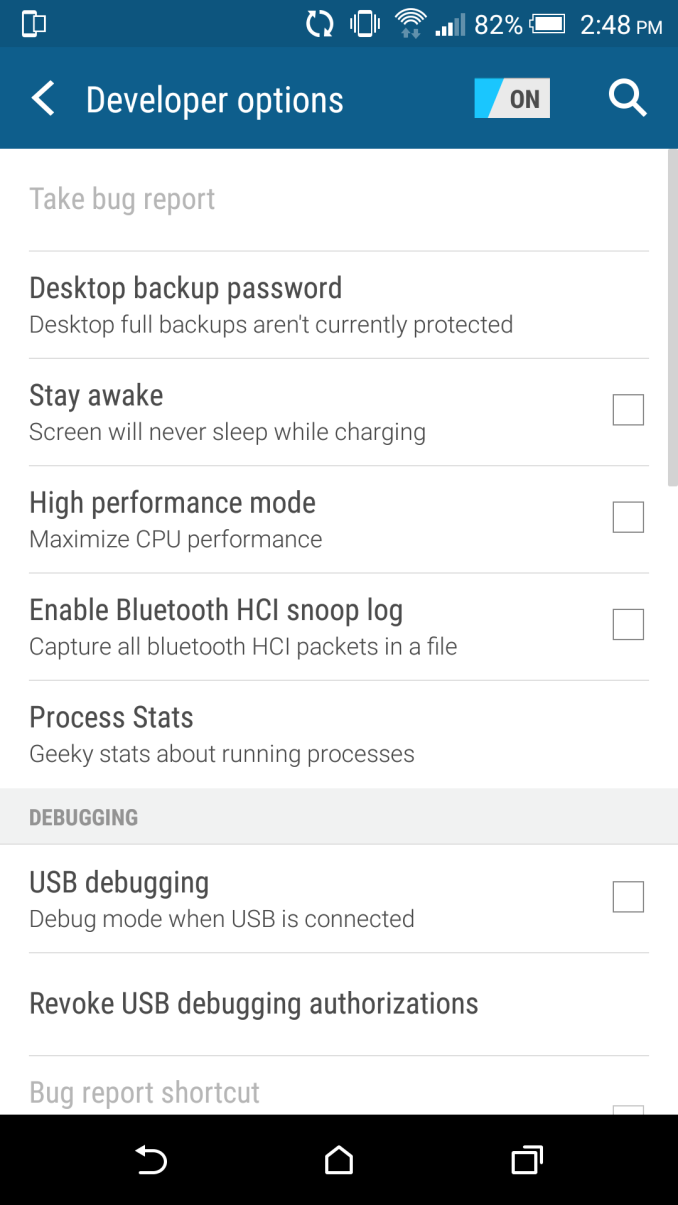








132 Comments
View All Comments
xnay - Monday, March 23, 2015 - link
Disappointing display, disappointing battery life - enough for me, these are key aspects of a mobile phone.And the camera is disappointing also and lacks OIS.
Chaser - Monday, March 23, 2015 - link
Crap battery life. Pass. Bummer too because I like HTC.trivor - Monday, March 23, 2015 - link
I think the really amazing things when you look at all the benchmarks is how well the LG G2 has held up at the 18 month point since launch. It's battery life is excellent and overall performance of the Snapdragon 800 is quite good overall with an excellent 1080p IPS panel.will54 - Monday, March 23, 2015 - link
Has anyone else read any reviews of the M9, and if so did they have the same complaints of the screen? They might be using a different vendor for screens and Anandtech might have just gotten a lemon.aryonoco - Monday, March 23, 2015 - link
Yes every review of the M9 basically says the same. The panel is sub par, the colours have a green tint to them, and it's not accurate.M7's display was better than M8, which is itself better than M9. Such a massive disappointment to see this regression.
hp79 - Monday, March 23, 2015 - link
Is the front bezel plastic or metal?From the article, "but the plastic bezel has been updated to surround the entire front of the device instead of just the speakers"
Can you double check whether the front piece is plastic or metal?
Engadget posted a review yesterday saying "... the M9 is the first One with a front plate hewn from a single block of aluminum, with holes machined in to hold the screen and speakers in place. ..."
Thanks.
Kepe - Monday, March 23, 2015 - link
Looking at the pictures, the texture of the front looks a lot like what plastic usually looks like. Completely different from what the metal parts at the back look like.JoshHo - Tuesday, March 24, 2015 - link
It's definitely plastic, just touching it when the phone is cold makes it obvious.Samus - Monday, March 23, 2015 - link
ohhh HTC, what a dud :(no wonder the CEO stepped down.
Morawka - Tuesday, March 24, 2015 - link
Snapdragon 810 is literally breathing fire. Sad that the first 64bit soc from qualcomm runs hot... They really dropped the ball by not having a Krait 64 bit soc by now.. Apple's done shipped 3 64 bit soc's, soon to be 5...That's right, by the time Qualcomm ships Krait 64bit. Apple will have already shipped 5 different 64bit SOC's counting the A7, A8, A8X, A9, A9X. And probably 250 million of them (didn't do the math since release but it's safe to say it's close)
This has really hurt android as a platform. It will certainly recover, but the damage is done.